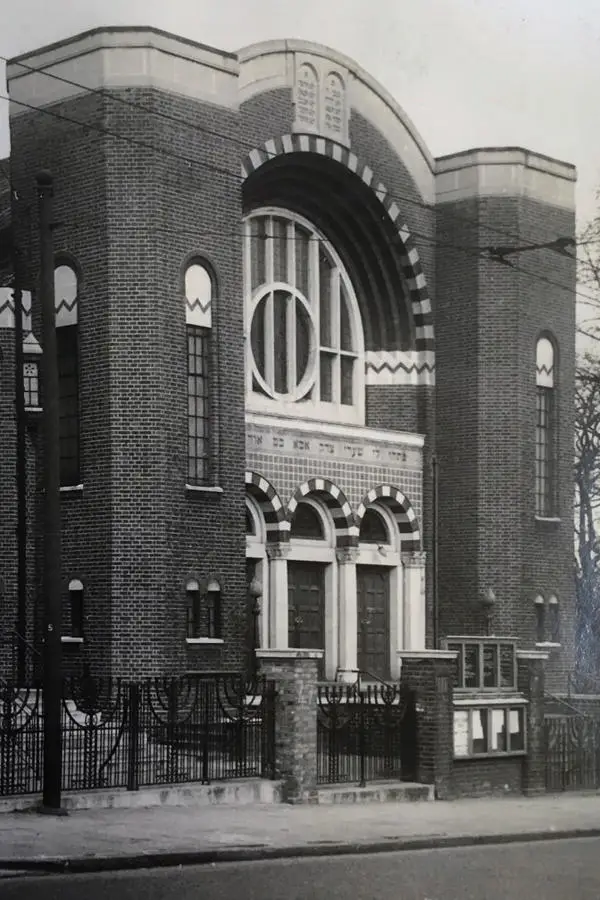Anglo-Jewish Collections
Anglo-Jewish Collections at LMA – cataloguing update
For more than 25 years London Metropolitan Archives has been a centre of excellence for the archives of Anglo-Jewry, holding one of the largest collections of Jewish archives in the country, amounting to over 1000 linear metres. It is a challenge to keep up with the cataloguing and conservation of these collections so in 2018 LMA was pleased to be awarded a follow-on grant from the Rothschild Foundation Hanadiv Europe to continue cataloguing the backlog.
Anglo-Jewish collections at LMA are well used by the Jewish community, academics and general researchers. Investigating the collections of Anglo-Jewish records at LMA is an exciting opportunity to learn about the varied lives of individuals, and the wider life of Jewish communities within London and the United Kingdom. The cataloguing project aims to increase the volume of Jewish records available to both researchers and the depositing institutions themselves through detailed cataloguing of discrete collections. Project archivist Kimberley Smith takes a closer look at some of the records she has appraised, organised, catalogued and described, including those of Clapton Synagogue, demolished in 2006.
Clapton Synagogue
I particularly enjoyed cataloguing the records of Clapton Synagogue (LMA/4769), which was located at 47 Lea Bridge Road until 2006. Clapton Synagogue was one of three synagogues designed by Newcastle based architect Marcus Kenneth Glass, who was known for his 'cinematic' style buildings with tall windows and art deco detailing.

The records of this synagogue portray a close-knit Jewish community, supported by their local synagogue across a diverse range of activities. A high volume of correspondence and notices relate to these, from finance, fundraising and events, to hire requests for marriage ceremonies, and even documents relating to fire warden duty to protect the synagogue. The volume of this material is indicative of the reciprocal relationship between congregants and those working at the synagogue. Records highlight the mutual commitment between congregation and synagogue, with financial and moral support provided to the synagogue to ensure its successful running.
The collection contains a very limited number of photographs and, as the synagogue was demolished in 2006, it is the correspondence, plans and promotional material that really bring the personal and professional aspects of the building and congregation to life.
David Jacobs
In contrast, the photographs deposited by David Jacobs (LMA/4778) provide a strong visual representation of the buildings and sites used by Jewish communities across London. Collating newspaper cuttings and photographs in this collection allows researchers to gain an insight into the vibrant moments and activities of each synagogue. The photographs capture where these events occurred, placing the lifestyles of these congregations in context. In many of these cases, the synagogues have subsequently closed or congregations have amalgamated, which means this collection is a valuable resource to reflect on both the architectural and decorative elements of past and present structures. David thankfully captured both the interior and exterior of Clapton Synagogue (LMA/4769) before it was demolished, which demonstrates how researching and exploring across different collections can be beneficial.
Board of Deputies of British Jews
Cataloguing the records of the International Jewish body the Board of Deputies of British Jews (ACC/3121), made me aware of the broad nature of Jewish communities across the world. This collection highlights the complex and transformative relationships that existed and exist within these communities, and the value that collating these records can have in providing a holistic view of their responsibilities, activities and interactions. Records include agendas and minutes of committees, correspondence, and documents related to the varied and high-profile events and functions organised by the Board. The high volume of photographs included in this collection depict the positive and motivating impact these activities had on members and Jewish communities. Collaboration with politicians, other religious groups and local schools indicates the institution’s active and positive interest in educating others about the Jewish way of life, using different methods to encourage integration and acceptance.
Access
Access to some of these collections is by permission of the depositor only, and records containing personal information are closed under data protection, but many records are freely available for research - see the LMA Collections catalogue under the appropriate collection reference code for details.